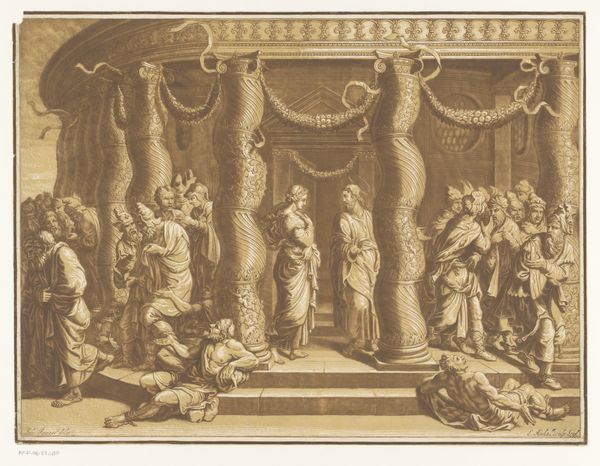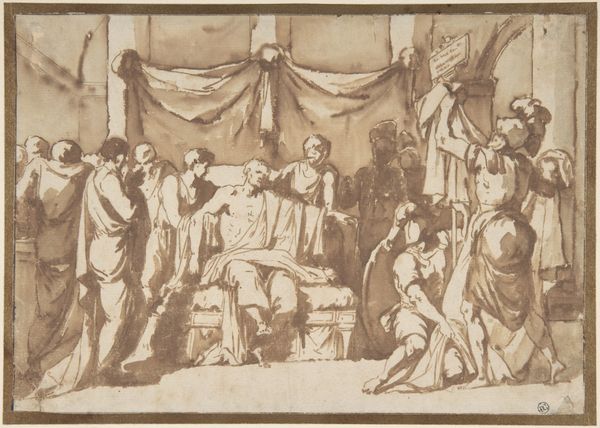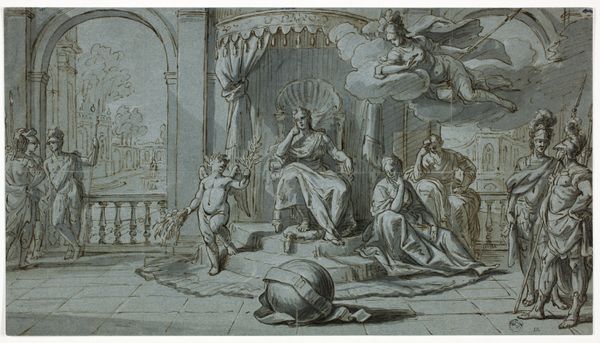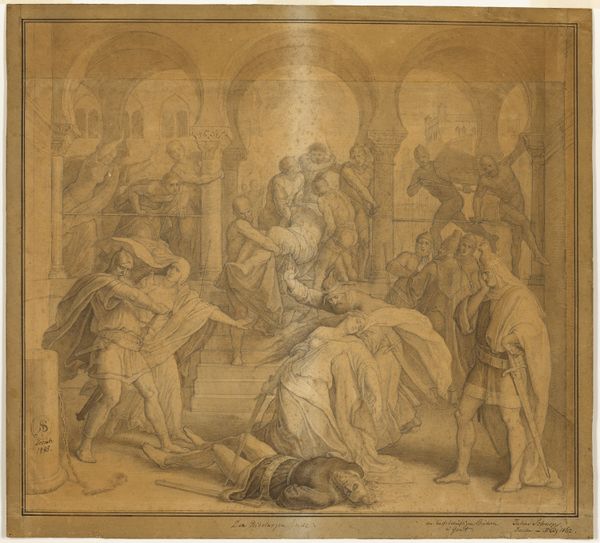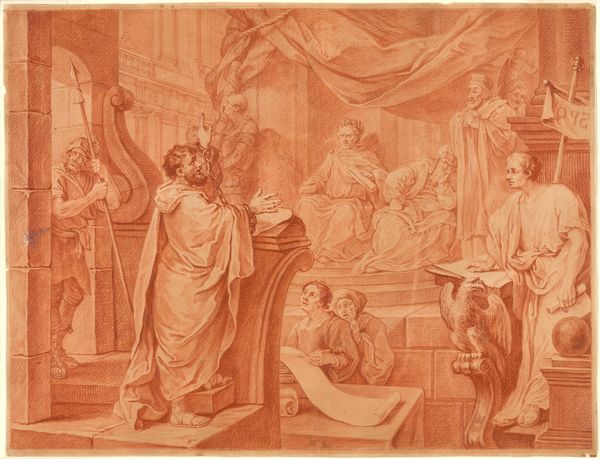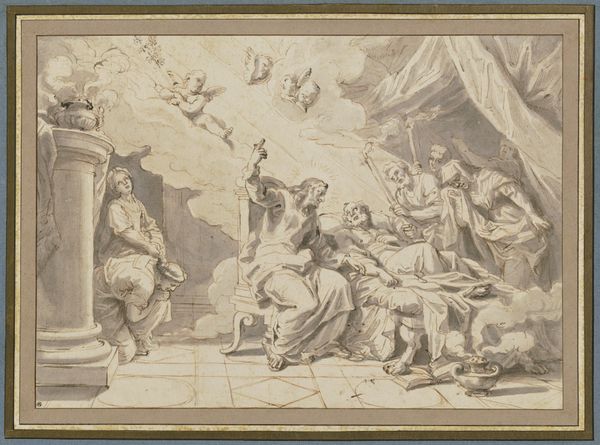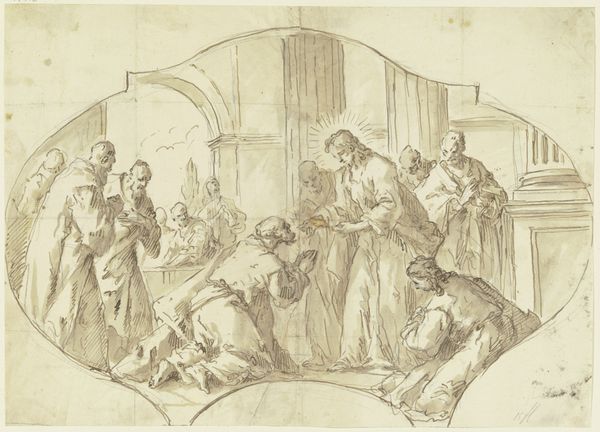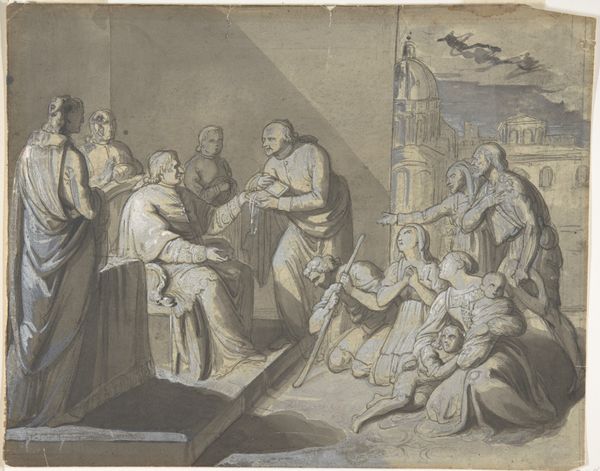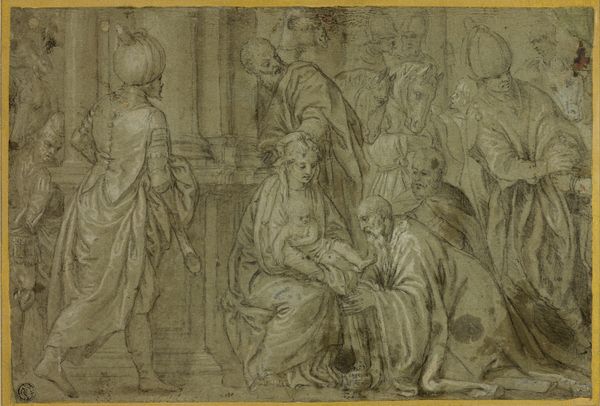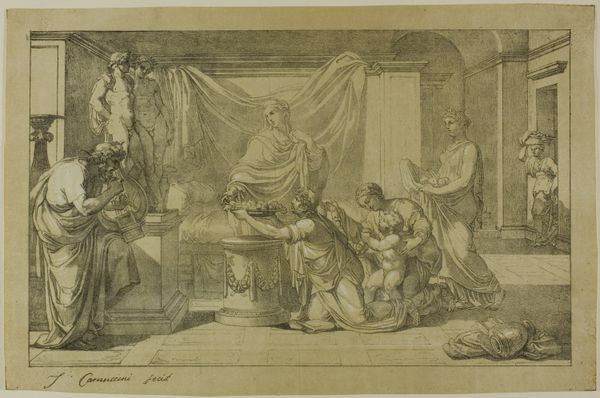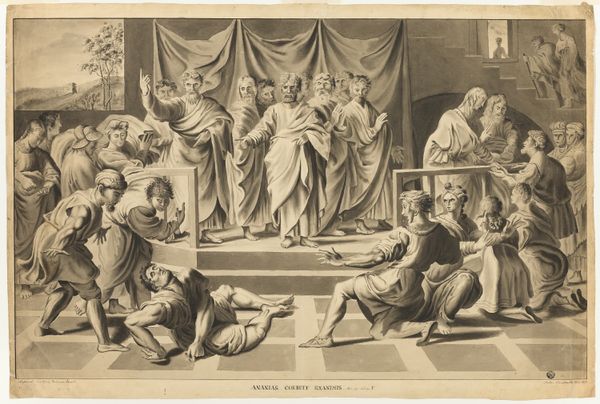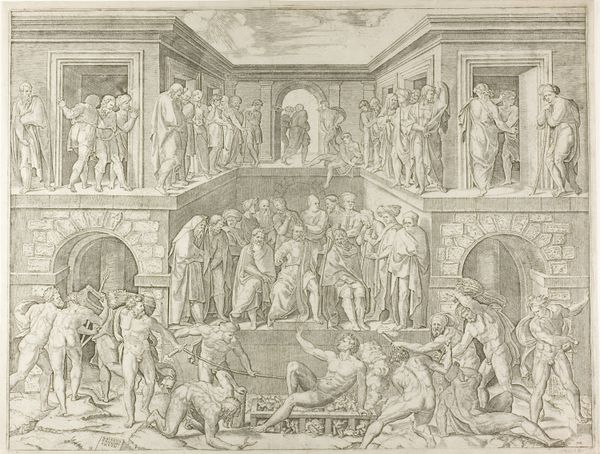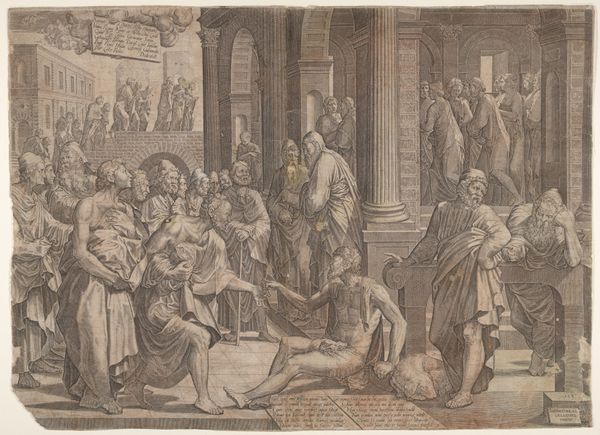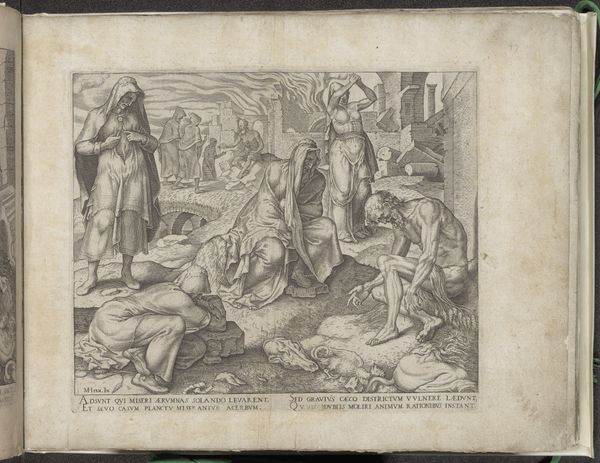
drawing, pencil
#
drawing
#
neoclacissism
#
narrative-art
#
landscape
#
figuration
#
pencil
#
history-painting
#
academic-art
Copyright: Public Domain
Editor: Friedrich Müller's 1818 pencil drawing, "Agamemnon's Death," at the Städel Museum, is quite striking! The figures, rendered in monochrome, possess this sculpted, almost frozen quality, amidst what must have been a very heated, emotional scene. How do you interpret the symbolism at play here? Curator: What I see is a fascinating reconstruction of a pivotal scene from Greek tragedy. The symbolism here speaks volumes about betrayal and the collapse of heroic ideals. Agamemnon, the victorious king, murdered in his bath, becomes a potent symbol himself. Editor: How so? Curator: Notice the expressions of grief. The carefully arranged bodies convey much about the human cost of war and vengeance. Even the architecture, those cold, neo-classical lines in the background, foreshadow inevitability. Do you see how Müller is connecting the personal drama with broader historical forces? Editor: I do, now that you mention it! It’s almost like a stage, perfectly set for tragedy, and each gesture conveys emotional and political messages. Is there something else about the setting that you see as particularly important? Curator: Look closer at the props, like the bathtub and the cloth draped over Agamemnon’s body. Water is purification but in this scenario of Agamemnon's murder, it represents vulnerability and death. These symbols aren’t just decorative, they point to larger themes about justice and power. Editor: It seems Müller used the symbols as memory keys, unlocking the deeper meanings of the myth! I definitely see much more now, thank you. Curator: Yes, exactly. Visual elements carry meaning forward in ways words often cannot, linking past to present.
Comments
No comments
Be the first to comment and join the conversation on the ultimate creative platform.
